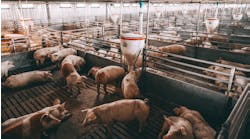While Covid, labor, supply chain and now inflation woes have hurt all food and beverage manufacturers, could those hurdles have put contract manufacturers in a stronger position? And in the process have hurt startup brands?
That’s the case for at least the stronger contract manufacturers (comans), according to a people involved in the category. Consultant David Boyle says the woes of the past three years have motivated brand owners to bring some overseas sourcing back to the U.S., to create multiple sources of manufacturing and to favor reliable manufacturing partners with their own strong supply chains over just anybody who can bake their nutrition bars. All of that benefits strong contract manufacturers.
For the comans, the past years’ woes reduced their numbers a bit, while at the same time bringing the survivors all the work they can handle. They’ve also refocused on the manufacturing rather than ancillary services like product development and commercialization, which they started to develop and offer to get more business in the years before Covid.
“It’s emboldened them to cull some of their more difficult clients,” says Boyle, who runs Boyle Brands, an operations and commercialization consulting service specializing in helping concept products get commercialized. That usually involves finding a contract manufacturer.
Reflecting on the pandemic, “CP/CMs [contract packagers/contract manufacturers] reported 40% or more spikes, with many having to turn down business or displace lower volume customers in favor of the new business,” says the State of the Industry Report from the Contract Packaging Association. “Covid drastically increased the percentages of products being produced by CP/CMs on behalf of their branded customers.”
Our Covid stories told of consumers emptying store shelves of trusted brands and familiar pantry staples such as boxed macaroni and cheese, canned soups and frozen pizzas. Most of those products haven’t changed substantially in decades, so many already were farmed out to comans. The contract manufacturers who already had those contracts saw their volumes increase during the pandemic.
“Our customers’ products were already popular pre-Covid. During the lockdown, they became even more popular,” says Keith Lindsey, CEO of Salm Partners, a Midwest contract manufacturer of sausage and hot dog products. “Covid caused a decrease in industry capacity and an increase in demand.”
Trends from the pandemic
The Contract Packaging Assn. report touches on several other trends resulting from the pandemic:
- “While many of the SKU reductions produced by the pandemic will likely reverse as we enter a ‘new normal,’ it is likely that some of these rationalizations will be long lasting.”
- “Longer-term trends such as the shedding of assets by legacy food and CPG companies will continue unabated. These build vs. buy calculations continue to favor outsourcing for both emergent and mature products for brand owners of all sizes.”
- “While there will be repatriation on much of this [pandemic-caused] volume, we believe that the repatriation will be slow and many products will not be returned to internal production.”
Boyle says he’s seen a huge increase this year in companies using his services and searching his database for contract manufacturers, “both from small manufacturers just getting started and from Fortune 500 companies looking for secondary sources of manufacturing.”
Despite the demands, most comans currently are running a bit less because of ingredient and packaging delays as well as their own labor shortages, he adds. So when they do take on a project, they want it to be a long run and they want to be able to put in sizable orders of the supply chain items they’ll need to fulfill that order. “They’d rather service 10 or 15 sizable brands than service 60 smaller accounts,” he explains.
Being a good supply chain partner goes both ways. “Much as our customers have collaborated with us, we have found that being a cooperative partner with our suppliers has helped keep a reliable supply of products,” adds Lindsey. “For example, we have used our supply chain to procure parts for an equipment supplier when they communicated a delay due to part availability.”
And now transportation issues, both cost and reliability, are motivating brand owners to find manufacturers in multiple geographies – North and South, East and West Coasts – to make shipping quicker and easier to find. Sometimes that means multiple comans; sometimes that means a coman even when a brand owner is manufacturing the product.
The contract manufacturers who survived the pandemic and subsequent woes are gearing up for a sustained period of growth. While co-manufacturing capacity is tight right now, Boyle said he’s aware of many comans building additional lines or even plants, which will increase capacity in a year or so. And he believes new products from entrepreneurs will come back into vogue.
“Pre-Covid [capital spending] projections were strong and in keeping with previous years,” said the Contract Packaging Assn. report. “The Covid pandemic has led to unplanned, even greater increases in capital expenditures to meet the customers’ order volumes. The long lead times on new equipment and the acute equipment shortage has left CP/CMs and their customers scrambling for additional capacity.
“On average, CP/CM leaders predict a 20% increase in capex per year as the need for capacity and new equipment intensifies.” The report also notes there’s quite a bit of outside investment money flowing into this category right now.
“We were already opening a new facility and scaled it as quickly as possible,” says Lindsey. “We have added three production lines since COVID, and to grow staff during this period requires constant attention to the value you offer your workforce.”
Among contract manufacturers, as with the overall food & beverage industry, the big keep getting bigger while the small are struggling to survive.


